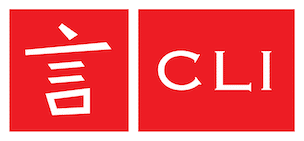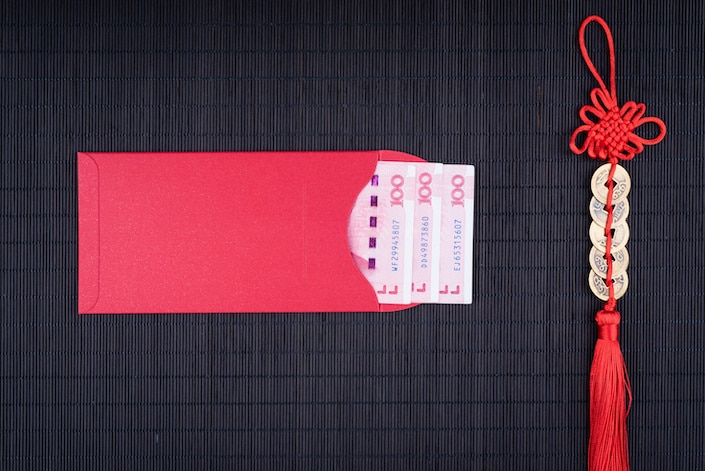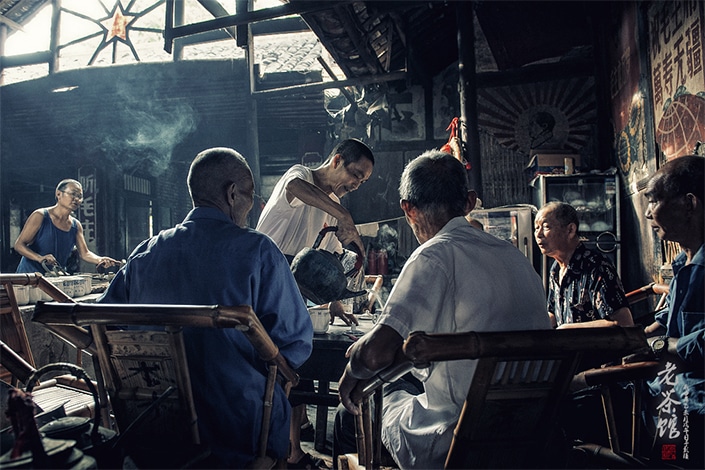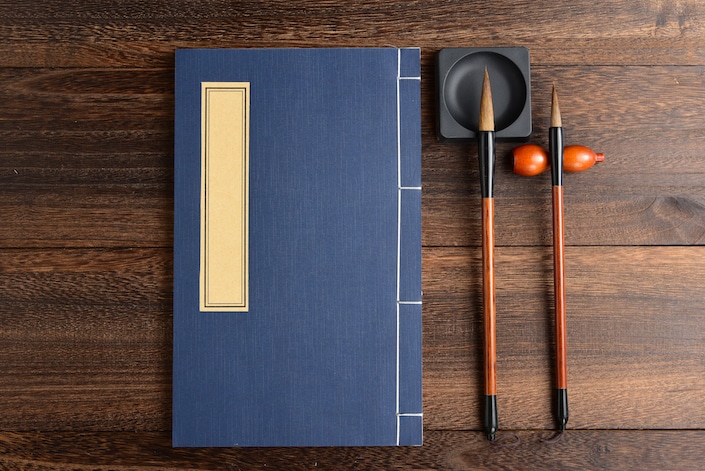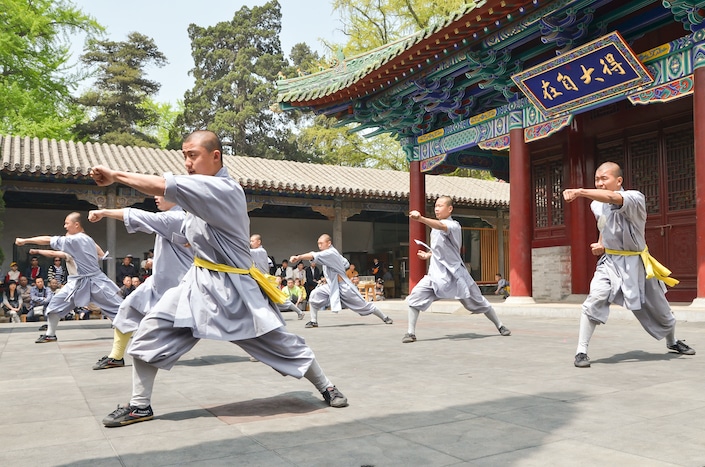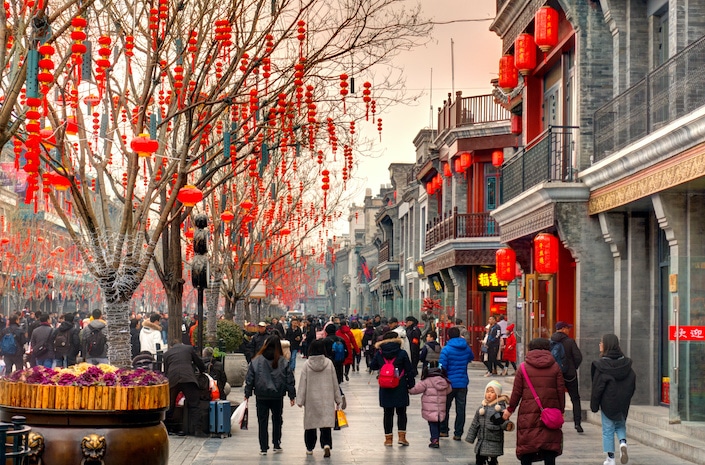Feng Shui in Your Home: The Ultimate Guide
Learn Chinese in China or on Zoom and gain fluency in Chinese!
Join CLI and learn Chinese with your personal team of Mandarin teachers online or in person at the CLI Center in Guilin, China.
Implementing feng shui (风水 fēng shuǐ) in your home is a transformative process that goes beyond mere decoration.
This comprehensive guide provides overviews feng shui principles, offering practical steps to create a balanced and inviting living environment that supports your life goals.
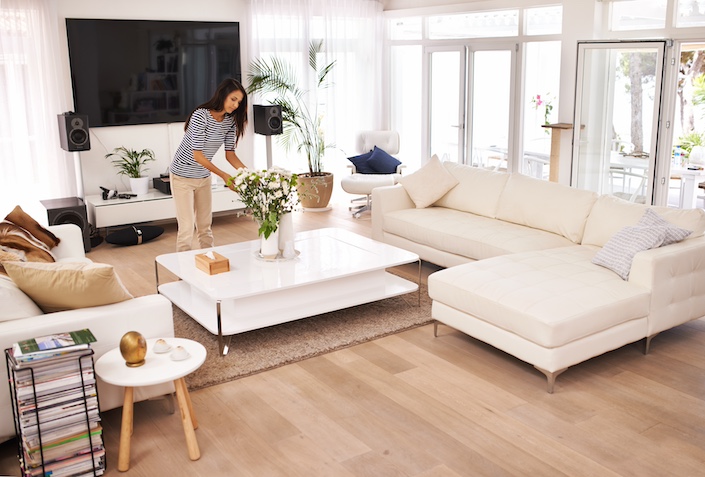
Table of Contents
- What is feng shui?
- Understanding Feng Shui Basics
- Implementing Feng Shui in Your Home
- General Feng Shui Dos and Don’ts
- Final Thoughts on Feng Shui Implementation
- The history of feng shui and its ancient traditions
- Practice of feng shui today
- Feng shui and interior design
- The beauty of feng shui
- Feng shui vocabulary
What is feng shui?
The word “feng shui” is a combination of the Chinese words for wind (风 fēng) and water (水 shuǐ), and can roughly be translated as “the way of wind and water.” Feng shui is an ancient Chinese philosophical concept based on the idea of “conscious occupation” and the harmonization of space, with the aim of bringing positive energy and influence to the people who occupy space in the world.
Yang energy, which is traditionally associated with males, is said to be active and light, while Yin, or “female,” energy is said to be dark and passive. Together, Yin and Yang represent the duality of opposite forces that make up everything in the universe.
Feng shui principles represent a blueprint that, if followed, can help balance and create harmony between these vital energies.

Feng shui principles have been used for centuries to create harmonious indoor and outdoor environments.
Understanding Feng Shui Basics
Feng Shui, the ancient Chinese art of placement, focuses on harmonizing the energies in your environment to promote well-being, prosperity, and overall happiness. By understanding and applying its principles, you can create a balanced and harmonious living space that supports your life goals. Below is a detailed guide on how to implement Feng Shui in your home.
Chi: The Life Force Energy
Chi (or Qi) is the fundamental life force that flows through all living things, embodying the essence of vitality and health. In Feng Shui, the flow of Chi is crucial because it directly influences the energy and atmosphere of your living space. When Chi flows smoothly, it promotes positivity, well-being, and harmony in your environment, enhancing your physical, emotional, and spiritual health.
Conversely, when Chi is blocked or stagnant, it can create areas of negative energy, leading to feelings of discomfort, stress, or even illness. Blockages in Chi can result from clutter, poor furniture arrangement, or neglected areas of the home, which disrupt the natural flow of energy. For instance, a cluttered room might cause Chi to become trapped, creating a sense of unease or heaviness in that space.

Practicing Tai Chi is a powerful way to open up and enhance the flow of Chi, promoting overall health and vitality.
Enabling the Smooth Flow of Chi
To facilitate the smooth flow of Chi, it’s essential to maintain a well-organized, clean, and thoughtfully arranged home. This can involve decluttering, ensuring that pathways are clear, and using colors, shapes, and materials that encourage energy movement. The goal is to create an environment where Chi can circulate freely, uplifting the energy of the space and the people within it.
Additionally, incorporating natural elements like plants, water features, and natural light can help invigorate Chi, bringing freshness and vibrancy to your home. By being mindful of the flow of Chi, you can transform your living space into a sanctuary of balance, where positive energy thrives and supports all aspects of your life.

A cairn of balanced stones on a shelf symbolizes the steady flow of Chi energy, fostering a sense of stability, tranquility, and harmony in the space.
Yin and Yang: Balancing Energies
Yin and Yang are the foundational dual forces in Feng Shui, representing the balance between opposites in the universe. These two energies are interdependent, constantly interacting to create harmony in the natural world. In Feng Shui, achieving balance between Yin and Yang in your home is essential for fostering a space that feels both peaceful and energizing.

The Yin-Yang symbol represents the duality of the universe, illustrating how opposite forces—such as light and dark, or male and female—are interconnected and interdependent, balancing each other to create harmony in the natural world.
Understanding Yin Energy
Yin is the feminine, passive energy that is calm, nurturing, and introspective. It’s associated with darkness, coolness, and softness, often symbolized by elements like water, earth, and the moon. In a home, Yin energy can be cultivated through the use of soft, muted colors like blues, greens, and lavenders, which evoke a sense of tranquility. Textures that are plush and comforting, such as velvet or cotton, also contribute to a Yin atmosphere, making spaces like bedrooms or relaxation areas feel more restful and inviting.
Yin energy is important in spaces where you want to relax, reflect, and rejuvenate. Too much Yin, however, can make a space feel cold, dark, or sluggish. For instance, a room that is overly dark or filled with heavy, dull furnishings might feel oppressive or uninspiring. Balancing Yin energy with elements of Yang ensures that a space remains vibrant and lively.

This serene setting, featuring soft colors and plush textures creates a calm and nurturing environment, embodies Yin energy, ideal for relaxation and introspection.
Understanding Yang Energy
Yang, on the other hand, is the masculine, active energy that is bright, energetic, and expansive. It is associated with light, warmth, and movement, symbolized by the sun, fire, and wind. Yang energy is cultivated in a home through the use of bright colors like reds, yellows, and oranges, which bring a sense of vitality and enthusiasm. Harder, shinier textures such as metals, glass, or polished wood contribute to a Yang environment, making spaces feel dynamic and invigorating.
Yang energy is particularly important in areas of the home where activity and engagement are key, such as living rooms, kitchens, or workspaces. However, too much Yang energy can lead to feelings of restlessness, anxiety, or overstimulation. A room that is overly bright or cluttered with bold colors and patterns might feel chaotic or overwhelming. Balancing Yang with elements of Yin helps to create a space that is energizing but still grounded.

This vibrant, sunlit living room embodies Yang energy with its bright colors, dynamic textures, and expansive layout, creating an atmosphere of vitality and engagement.
Creating Balance
The true essence of Feng Shui lies in balancing Yin and Yang to create a harmonious living environment. This balance can be achieved through the thoughtful use of color, light, and texture. For example, in a living room, combining soft, comfortable seating (Yin) with bright, open windows and lively artwork (Yang) can create a space that is both relaxing and welcoming. In a bedroom, using soft lighting and plush bedding (Yin) alongside elements like mirrors or metallic accents (Yang) can enhance both restfulness and vibrancy.
In practical terms, achieving this balance involves assessing the existing energy in each room and making adjustments as needed. If a space feels too cold or stagnant, introducing more Yang elements—such as brighter lighting or vibrant colors—can invigorate the room. Conversely, if a space feels too chaotic or overwhelming, adding more Yin elements—such as soft textures, muted colors, or dimmable lighting—can bring a sense of calm and serenity.
By consciously balancing Yin and Yang in your home, you can create a space that supports all aspects of your life, providing both the restful, nurturing energy you need to recharge and the dynamic, active energy that fuels productivity and joy.

This living room balances Yin and Yang elements, combining soft, comfortable seating and natural greenery (Yin) with bright lighting and vibrant colors (Yang) to create a space that is both relaxing and energizing.
The Five Elements
Feng Shui incorporates five key elements—Wood, Fire, Earth, Metal, and Water—each with unique qualities that influence energy. These elements are represented by specific colors, shapes, and materials and should be incorporated into your home to balance energy:
- Wood: Growth and vitality, represented by green and rectangular shapes.
- Fire: Passion and transformation, represented by red and triangular shapes.
- Earth: Stability and nourishment, represented by yellow and square shapes.
- Metal: Clarity and precision, represented by white and circular shapes.
- Water: Flow and adaptability, represented by black and wavy shapes.

The Five Elements: 木 (mù), 火 (huǒ), 土 (tǔ), 金 (jīn), and 水 (shuǐ).
The Bagua Energy Map
The bagua map (八卦图 bāguàtú) is an octagon shaped energy map that consists of eight areas around a center. It functions as an energy grid that is used as a blueprint to design floor plans for any sort of space.
In order to decorate a home in accordance with feng shui principles, the bagua map is placed over the floor plan, with the bottom of the bagua map aligned along the same axis as the front door or main entrance. This way, you can see which parts of the house are covered by each bagua area.
Each bagua area has different attributes associated with it and you can “activate” an area by bringing in its specific color, element or shape. Each bagua also has a trigram associated with it. These trigrams are ancient Chinese symbols that originated from the Yi Ching (易经; The Book of Changes). Each trigram is represented by 3 lines, and the length of the lines also determine whether the given area is Yin or Yang dominant.

In recent years, the use of bagua maps has become popular among some western interior designers.
Bagua maps can be layered to cover different floors, but the main room or area of a house or building will need to be done first. Each bagua area is split into the following:
1. 離 Lí
- Direction: South
- Element: Fire
- Life area: Fame & Reputation
- Colors: Red
- Trigram symbol: ☲
2. 坤 Kūn
- Direction: Southwest
- Element: Earth
- Life area: Love & Partnerships
- Colors: Pink
- Trigram symbol: ☷
3. 兌 Duì
- Direction: West
- Element: Metal
- Life area: Children and Creativity
- Colors: White
- Trigram symbol: ☱
4. 乾 Qián
- Direction: Northwest
- Element: Metal
- Life area: Travel
- Color: Gray
- Trigram symbol: ☰
5. 坎 Kǎn
- Direction: North
- Element: Water
- Life area: Career & Path in Life
- Colors: Black
- Trigram symbol: ☵
6. 艮 Gèn
- Direction: Northeast
- Element: Earth
- Life area: Knowledge & Self-Cultivation
- Colors: Dark Blue
- Trigram symbol: ☶
7. 震 Zhèn
- Direction: East
- Element: Wood
- Life area: Family & Health
- Colors: Green, Blue, Teal
- Trigram symbol: ☳
8. 巽 Xùn
- Direction: South East
- Element: Wood
- Life area: Wealth & Abundance
- Colors: Purple
- Trigram symbol: ☴
Final Thoughts on the Bagua Map
The Bagua Map is an essential tool in Feng Shui, used to map different areas of your life to specific sections of your home. It divides your space into nine sections, each corresponding to aspects like wealth, health, career, and relationships. Understanding the Bagua Map allows you to optimize energy flow in each area of your life.
Implementing Feng Shui in Your Home
Applying Feng Shui principles to different areas of your home is a powerful way to enhance the flow of positive energy, or Chi, throughout your living space.
Each room in your home plays a unique role in your overall well-being, and by carefully considering the placement of furniture, colors, and natural elements, you can create a harmonious environment that supports your life goals.
Whether you're welcoming energy through the entrance, fostering connection in the living room, or creating a restful sanctuary in the bedroom, Feng Shui offers practical guidance to transform your home into a balanced and inviting space. Let's explore how you can apply these principles to various key areas of your home.

Applying Feng Shui principles throughout your home optimizes the flow of positive energy (Chi) by strategically arranging furniture, colors, and natural elements, creating a balanced and harmonious environment that supports your well-being and life goals.
Entrance and Entryway
The entrance to your home is the gateway for Chi. It sets the tone for the energy that enters your space. Keep this area clean, well-lit, and free of clutter to invite positive energy. Adding plants or using bright colors can enhance the welcoming atmosphere.

A well-lit and uncluttered entrance with vibrant plants sets a welcoming tone, inviting positive energy into your home from the moment you step inside.
Living Room
The living room is a space for gathering and should promote comfort and connection. Position furniture in a way that allows for maximum light exposure and avoids blocking pathways. Incorporate elements like plants and soothing colors to balance energy. Ensure that seating arrangements face each other to encourage interaction.

Arrange seating to face each other in a well-lit living room, incorporating plants and soothing colors to create a space that fosters comfort and connection.
Kitchen
In Feng Shui, the kitchen is associated with nourishment and prosperity. Keep the stove clean and in good working order, as it represents your ability to nourish yourself and your family. The kitchen should be well-lit, and the use of calming colors like blue and green can enhance the energy. Avoid placing the trash can near the stove or food-preparation areas, as it can contaminate the energy.

A bright, well-organized kitchen with calming colors and a clean stove enhances the energy of nourishment and prosperity, avoiding any disruption from clutter.
Bedroom
The bedroom should be a sanctuary for rest and rejuvenation. Place the bed in a commanding position where you can see the door without being directly in line with it. Use soft, calming colors like blue or lavender to promote relaxation. Avoid placing mirrors opposite the bed, as they can disrupt sleep by reflecting too much energy.

A serene bedroom with soft colors and a commanding bed position promotes relaxation, ensuring a restful sanctuary by keeping mirrors away from the bed.
Bathroom
The bathroom represents cleansing and should be kept clean and clutter-free. Ensure that the toilet lid is always down to prevent energy from escaping. Incorporate water-representative colors like blue and black, and use soft lighting to create a calming atmosphere. Plants can help purify the air and add a touch of nature.

A clutter-free bathroom with water-inspired colors and soft lighting supports a calming atmosphere, ensuring energy doesn't escape by keeping the toilet lid down.
Office
In your home office, position your desk in a way that allows you to see the door, symbolizing control over your work life. Keep the space organized to promote clarity of thought and productivity. Use calming colors and incorporate plants to enhance growth and focus. Avoid clutter and ensure that the space is well-lit.

An organized home office with the desk positioned to see the door, enhanced with natural light and greenery, promotes focus, productivity, and a sense of control.
General Feng Shui Dos and Don’ts
To optimize Feng Shui in your home, focus on decluttering, maximizing natural light, and balancing elements. Avoid sharp corners, broken objects, harsh lighting, and excessive mirrors to maintain a harmonious space. These simple guidelines help create a balanced and inviting environment.
Dos
- Declutter Regularly: Clutter blocks Chi and creates stagnant energy, so keep your space organized and free from unnecessary items.
- Incorporate Natural Light: Maximize natural light in your home to promote vitality and positive energy.
- Use Feng Shui Symbols: Symbols like wind chimes, Buddha statues, or water features can enhance the energy in specific areas of your life.
- Balance Elements: Ensure all five elements are represented in your home to maintain a balanced energy flow.

A clutter-free, well-organized space with ample natural light and balanced elements promotes the smooth flow of Chi, enhancing vitality and harmony throughout your home.
Don’ts
- Avoid Sharp Corners: Sharp corners can create harsh energy, so opt for rounded furniture and decor where possible.
- Don’t Use Broken Objects: Broken items symbolize broken energy and can negatively impact your environment.
- Avoid Harsh Lighting: While light is essential, overly bright or harsh lighting can create an imbalance. Use softer, calming lights, especially in bedrooms and bathrooms.
- Don’t Overuse Mirrors: While mirrors can amplify energy, too many can create a chaotic environment, particularly in restful spaces like bedrooms.

To maintain a harmonious energy flow in your home, avoid Feng Shui don’ts like sharp corners, broken objects, harsh lighting, and excessive mirrors, as they can create chaotic and unbalanced environments.
Final Thoughts on Feng Shui Implementation
Implementing Feng Shui in your home involves more than just rearranging furniture. It’s about creating a space that supports your physical, emotional, and spiritual well-being.
By understanding and applying the principles of Chi, Yin and Yang, the five elements, and the Bagua Map, you can transform your living space into a sanctuary that promotes balance, harmony, and positive energy.
Whether you’re new to Feng Shui or refining your skills, these guidelines will help you create a home that nurtures every aspect of your life.

Creating a harmonious home with Feng Shui goes beyond simple decor adjustments; it's about fostering a balanced environment that nurtures your well-being on all levels. These principles guide you in transforming your space into a sanctuary of positive energy, supporting every aspect of your life.
The history of feng shui and its ancient traditions
There is some debate when it comes to the origins and history of feng shui. However, what is clear is that its history spans at least 3,000 years. In fact, this concept may even have been utilized as long as 6,000 years ago.
Feng shui is quite a complicated discipline, a geomancy with an incredibly long history tightly interwoven with Chinese astrology and metaphysics. Some scholars have also argued that feng shui symbols can be found in Taoism and Buddhism, suggesting that its history is bound up with that of these ancient belief systems.
Feng shui and the Chinese compass
For centuries, the Chinese believed that there were invisible forces at work all around us. Later, they understood that these invisible forces corresponded with the magnetic forces of the Earth.
This realization led to one of the greatest inventions in human history: the magnetic compass, or 罗盘 (luópán), also called the “feng shui compass.”
Although initially used as a tool for divination, the Chinese magnetic compass was later adopted for navigation by the Song Dynasty during the 11th century. Today, the traditional Luopan is still used by feng shui practitioners to determine the best location of objects.

The Chinese originally invented the compass as a tool for use in feng shui.
Feng shui in tomb location
Some of the earliest references to feng shui can be traced back to the Zhou dynasty (1122 BCE), when it was used for determining ideal locations for burial sites. This practice is still used today, with practionisers using the Chinese compass to find the best location for a person’s grave.
Many people believe that choosing the right position for one’s grave can bring blessings for one’s posterity. Choosing a poor location, however, can bring misfortune on future generations.
Auspicious locations were thought to be those with good Qi flow. One of the general principles used to choose such an auspicious location in feng shui is “lean against mountains and face waters,” so many tombs are built on or near mountains overlooking water.
The Ming Xiaoling Mausoleum and the Sun Yatsen Mausoleum, both located in Nanjing, are good examples of tombs built according to traditional feng shui principles.

The Sun Yatsen Mausoleum in Nanjing was built according to feng shui principles.
Feng shui in construction
Feng shui was and still is used to determine the ideal location of buildings and other sites, such as gardens, as well as their layout. Those planning a construction project should first take into consideration the location of the land, the area surrounding it and the direction that each proposed structure and its windows face.
Feng shui places great importance on symmetry in architecture. A good example of this use of the concept can be seen in the construction of The Forbidden City.
In accordance with feng shui principles, The Forbidden City was built on a main axis running from north to south, with the main front entrance facing south which was deemed an auspicious direction by the feng shui masters at the time. All buildings within the city were also symmetrically arranged on either side of the axis in order to create a harmonious flow of Qi.
Feng shui principles have also traditionally been used to design outdoor spaces in China. The classical Chinese gardens in Suzhou are very good examples of the application of feng shui concepts in landscaping.

The Forbidden City is a good example of the use of feng shui in traditional Chinese architecture.
Practice of feng shui today
Today, the ancient concept of Feng Shui continues to enjoy widespread popularity, both within China and in many other countries around the world.
Feng shui in modern China
Feng shui principles are still widely used in China today to determine the ideal location for tombs and buildings. Feng shui principles are also often used in interior design. These practices are still quite prevalent amongst older Chinese people and play an important role in modern Chinese culture.
When designing or buying a home, many people take into account the direction and positioning of the building with the goal of optimizing them according to feng shui principles.
Some may even hire a professional feng shui master (风水师傅 fēngshuǐ shīfù) to advise on the most auspicious layout and design of their home or office space in order to ensure optimal luck and a harmonious environment.

People in modern China still consult feng shui masters in certain situations.
Masters and skyscrapers
For example, if called on for advice regarding a new office building for a business, a feng shui master might give suggestions on how to decorate, the location of the building itself, where to situate the boss and their office, where to place the entrances and the reception and how much green space to utilize. It is believed that with these principles in place, the business will be able to receive prosperous energy which will ensure a smooth business operation.
Although some skeptics (especially among younger generations) may disregard feng shui as pure superstition, many Chinese people still design their homes and public spaces with its principles in mind. Its presence can still be seen reflected in the architectural design of both traditional and modern building units.
Some of the most prominent examples of the use of feng shui in modern Chinese architecture can be found in Hong Kong, where feng shui concepts were used to design iconic buildings like the HSBC Building and the Bank of China Tower.
Feng shui is also still utilized in modern China to find suitable burial sites. Tomb location is still incredibly important and many still believe that a grave's characteristics can influence a family for generations.
Some people in China today may even consult a feng shui master to move their ancestor’s tombs if they believe that the feng shui in the existing tomb location is creating bad luck for the family.

Feng shui principles were used in the construction of many of Hong Kong’s most iconic buildings.
Popularity outside of China
Feng shui has been gaining popularity outside of China for many years, and its influence is continuing to grow. Feng shui is no longer merely about the movement of Qi, but it represents a kind of clean and minimalist aesthetic.
Over the years, the popularization of “minimalism” in the west has greatly influenced the way people interact with their spaces. Many are becoming more aware about the important role that one’s environment plays in regulating mood and providing a relaxing experience.
Feng shui and interior design
Although feng shui was traditionally most commonly used in China to determine ideal locations for tombs and buildings, it can also be applied to interior design. Outside of China, using feng shui principles in interior design has become increasingly popular since it is believed that doing so can create positive effects for the people within an occupied space.
Modern feng shui practitioners use several methods and theories borrowed from traditional Chinese feng shui practices to achieve their aims:
Command position
In any given space, the command position is the spot that is the furthest from the door and not in direct line with it (basically located diagonally opposite, but still facing, the door).
In order to set up the command position in your home or any other space, the most important piece of furniture (such as your bed or desk) needs to be positioned diagonally across and facing the entrance of the room.
The command position is powerful and symbolic. It puts you in the best position to deal with whatever might “come through the door.” This is because you can see the doorway without being in direct line with it, which gives you enough time and space to mentally and physically prepare for any challenges that may arrive.

Many believe that applying feng shui concepts like command position can improve the energy flow in built environments.
A simple example
Taking what we have learned about the principles of feng shui above, you can see how a room may be decorated in order to optimize its energy.
For example, when using a bagua map over a floor plan, a bedroom might fall under the East (震 Zhèn) area.
Since the Zhen area is associated with the wood element and the colors blue and green, the room may have a wall or numerous objects that contain a variety of green and blue colors. A small tree plant (such as a bonsai or bamboo plant) or other woody elements (such as a wooden sculpture or a bed with a wooden frame) may also be placed in the room.
The bed would also be placed in the command position, meaning that it would be diagonally opposite (but facing) the bedroom door. One of the easiest ways to change feng shui in a room is to add or move one of the five elements associated with the location of the room.

Creating the right balance among the five elements is important in feng shui.
The beauty of feng shui
Whether you are a firm believer or an absolute skeptic, feng shui can be a fun way to bring traditional Chinese culture into your home and create a calming environment at the same time.
At its core, feng shui is more than just creating a harmonious space using elements and colors. It's about existential mindfulness, being attuned to one’s environment, and acknowledging the presence of the life force energy and metaphysical elements that surround us, but go unnoticed every day.
View this post on Instagram
Feng shui vocabulary
| Chinese | Pinyin | English |
|---|---|---|
| 气 | qì | vital energy force forming part of any living entity |
| 八卦图 | bāguàtú | bagua map |
| 形而上学 | xíng'érshàngxué | metaphysics |
| 探地术 | tàndìshù | geomancy |
| 伪科学 | wèikēxué | psuedoscience |
| 正能量 | zhèngnéngliàng | positive energy |
| 负能量 | fùnéngliàng | negative energy |
| 中国天文学 | Zhōngguó tiānwénxué | Chinese astronomy |
| 五行 | wǔháng | The Five Elements |
| 火 | huǒ | fire |
| 水 | shuǐ | water |
| 木 | mù | wood |
| 金 | jīn | metal |
| 土 | tǔ | earth |
| 指南针 | zhǐnánzhēn | compass |
| 位置 | wèizhì | location; position |
| 楼面布置图 | lóumiàn bùzhìtú | floor plan |
| 极简主义 | jíjiǎn zhǔyì | minimalism |
| 美学 | měixué | aesthetics |
| 和谐 | héxié | harmony |
| 平衡 | pínghéng | balance |
| 流动 | liúdòng | flow |
| 能量 | néngliàng | energy |
| 空间 | kōngjiān | space |
| 阴 | yīn | yin |
| 阳 | yáng | yang |
| 宁静 | níngjìng | tranquility |
| 对齐 | duìqí | symmetry |
| 意图 | yìtú | intention |
| 自然 | zìrán | nature |
| 光 | guāng | light |
| 方向 | fāngxiàng | direction |
| 活力 | huólì | vitality |
| 连接 | liánjiē | connection |
| 秩序 | zhìxù | order |
| 运动 | yùndòng | movement |
| 转化 | zhuǎnhuà | transformation |
| 正念 | zhèngniàn | positive thoughts |
| 安宁 | āníng | serenity |
The CLI team is comprised of China experts with advanced degrees in China studies, teaching Chinese as a foreign language, education, and other related disciplines. Founded in 2009, CLI is a center for Chinese language and cultural studies based in scenic Guilin, China.

